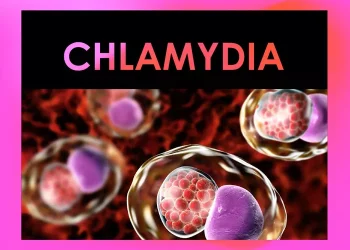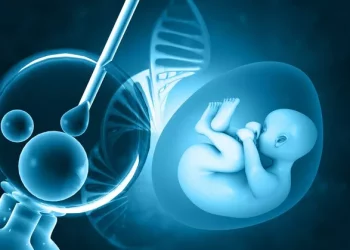Infertility is a significant concern for many couples. One common procedure that intentionally leads to male infertility is a vasectomy. This surgical method is chosen for various reasons, predominantly as a form of permanent contraception. Understanding why a vasectomy leads to infertility involves exploring male reproductive anatomy, the surgical process, and the physiological effects. This article aims to provide a comprehensive explanation of how a vasectomy results in infertility, suitable for both medical professionals and the general public.
Male Reproductive Anatomy
To understand the impact of a vasectomy, it is essential to first comprehend the male reproductive system. Key components include the testes, epididymis, vas deferens, seminal vesicles, prostate gland, and urethra.
Testes: The testes are responsible for producing sperm and the hormone testosterone. Sperm production occurs in the seminiferous tubules within the testes.
Epididymis: This is a coiled tube where sperm mature and are stored after being produced in the testes.
Vas Deferens: A muscular tube that transports mature sperm from the epididymis to the urethra in preparation for ejaculation.
Seminal Vesicles and Prostate Gland: These glands produce seminal fluid, which mixes with sperm to form semen.
Urethra: The duct through which semen is expelled during ejaculation.
What is a Vasectomy?
A vasectomy is a minor surgical procedure aimed at providing permanent contraception for men. During this procedure, the vas deferens are cut, sealed, or otherwise blocked. This action prevents sperm from mixing with the seminal fluid, rendering the man infertile.
The Vasectomy Procedure
There are two main types of vasectomy procedures: the conventional vasectomy and the no-scalpel vasectomy.
Conventional Vasectomy: This traditional method involves making small incisions in the scrotum to access the vas deferens. The surgeon then cuts and seals each vas deferens, either by tying, cauterizing (burning), or using clips.
No-Scalpel Vasectomy: This modern technique involves a small puncture in the scrotum rather than an incision. Through this puncture, the vas deferens are lifted out, cut, and sealed. This method is less invasive and tends to have a quicker recovery time.
How Vasectomy Leads to Infertility
The fundamental reason a vasectomy leads to infertility is that it disrupts the path sperm take from the testes to the urethra. Here’s a detailed look at how this occurs:
Interruption of Sperm Transport: By cutting and sealing the vas deferens, sperm are blocked from reaching the urethra. Since the sperm cannot exit the body through ejaculation, they are absorbed by the body instead.
Sperm Production Continues: It is important to note that the testes continue to produce sperm after a vasectomy. However, the sperm are reabsorbed by the body since they cannot travel through the vas deferens.
No Effect on Sexual Function: A vasectomy does not affect the production of testosterone or the ability to ejaculate. The seminal fluid produced by the seminal vesicles and prostate gland still mixes and is expelled, but it does not contain sperm.
See Also: Does Smoking Affect Male Fertility?
The Physiology of Sperm Reabsorption
After a vasectomy, sperm are still produced but are absorbed by the body. Here’s how the process works:
Sperm Phagocytosis: White blood cells in the testes and epididymis engulf and digest the sperm cells, a process known as phagocytosis.
Breakdown and Absorption: The digested components of the sperm are broken down into smaller molecules and absorbed back into the bloodstream.
Potential Post-Vasectomy Complications
While vasectomy is generally safe, there are some potential complications to be aware of:
Short-Term Complications: These include bleeding, infection, and minor pain or discomfort immediately following the procedure.
Long-Term Complications: Rarely, some men may experience chronic pain, known as post-vasectomy pain syndrome. This condition can be due to nerve damage or pressure from sperm buildup.
Sperm Granulomas: These are small lumps that can form due to sperm leakage at the vasectomy site. They are usually not serious and often resolve on their own.
Effectiveness of Vasectomy
Vasectomy is one of the most effective forms of contraception, with a failure rate of less than 1%. However, it is crucial to follow post-operative instructions carefully, as residual sperm may still be present in the vas deferens for several weeks after the procedure.
Follow-Up Tests: Men are typically advised to have follow-up sperm tests to confirm the absence of sperm in their semen. This is usually done 8 to 16 weeks post-surgery.
Use of Alternative Contraception: Until a zero-sperm count is confirmed, couples should use alternative contraception to prevent pregnancy.
Psychological Impact of Vasectomy
Choosing to undergo a vasectomy can have psychological effects. Men might experience a range of emotions from relief and satisfaction to anxiety or regret. Psychological support and counseling can be beneficial in addressing these feelings.
Pre-Procedure Counseling: Discussing the decision with a healthcare provider and considering all options can help ensure that the choice is well-informed and deliberate.
Post-Procedure Support: Counseling and support groups can help men cope with any emotional or psychological impacts post-vasectomy.
Reversibility of Vasectomy
While a vasectomy is considered a permanent form of contraception, it can sometimes be reversed through a procedure known as vasovasostomy. However, success rates vary and are not guaranteed.
Vasovasostomy: This surgical procedure reconnects the cut ends of the vas deferens. The success of restoring fertility depends on factors such as the time elapsed since the vasectomy and the presence of any complications.
Success Rates: The success rates for vasectomy reversal can range from 30% to over 90%, depending on various factors, including the surgeon’s skill and the patient’s age.
Alternative Male Contraceptive Options
While vasectomy is a highly effective method, it is not suitable for everyone. Other male contraceptive options include:
Condoms: These are widely available, non-invasive, and offer protection against sexually transmitted infections (STIs).
Withdrawal Method: This method involves withdrawing the penis before ejaculation but is less reliable due to the potential presence of sperm in pre-ejaculatory fluid.
Hormonal Contraceptives: Research is ongoing into male hormonal contraceptives that reduce sperm production, but these are not yet widely available.
Conclusion
Vasectomy is a reliable and effective form of permanent male contraception. By cutting and sealing the vas deferens, it prevents sperm from being part of the ejaculate, thereby leading to infertility. The procedure is generally safe, with minimal complications and no impact on sexual function. Understanding the anatomy, procedure, and physiological effects helps clarify why vasectomy results in infertility. While it is a permanent solution, vasectomy reversal is possible but not guaranteed. Men considering this procedure should weigh the benefits and potential psychological impacts and explore all contraceptive options available to them.
Related Links:



























